We are up and out of camp at 6 A.M. this morning. We drive onto the plain that divides the Ngorongoro Conservation Area from the Serengeti National Park.
Our first sighting is that of a family of spotted hyena scavenging a wildebeest carcass
. The interaction among this family of eleven hyenas is fascinating. Small groups constantly peel off to harass nearby wildebeest. They are very clever. They charge among the wildebeest forcing them to run. The aged, infirm or lame are soon identified and targeted for the next meal.
Beth and I both identify prime candidates for the hyena but they defer. We believe the reason is twofold. First, they have just eaten a wildebeest. Second, the young hyenas are very much involved in the forays and appear to be in training.
As we drive further onto the plain, we see our first herd of eland. The eland is the largest of all antelope. The male can weigh up to 940 KG (2,060 lbs.). Amazingly, they have been seen to leap over fences twelve feet tall. They are usually very shy animals and these are no exception. They turn and run as we come close.
One of our prime directives for this safari is to find and stay with predators until they hunt
. Before 8 A.M. we spy a lone cheetah walking across the savannah in search of food. We follow. And, we follow. This poor creature can’t buy a break. No matter which direction she moves there is no cover. The gazelle – both Thomsons and Grants – have seen her and sounded the alarm. The warthogs in the area also see her and monitor her movements. We break away and leave her in peace.
A few hours earlier, we saw a National Geographic wildlife film crew. We now see them again. This time they have a brother and sister cheetah sitting on their vehicle. The brother is on the roof and the sister is on the hood. They are as calm and comfortable as any wild animals I have ever seen. They pose for pictures for us and other vehicles passing by.
All is serene until the film crew’s second vehicle deploys a small drone aircraft and allows it to film the cheetahs from above. The drone’s noise is unnerving to the cats. The adventurous male on the roof has some difficulty descending from his perch but, in the end, succeeds with no harm done
.
We set out again and soon encounter the first golden jackal we have ever seen. The golden is also called the “common” jackal. Ironically, the golden is more closely related to the grey wolf or coyote than to either the black backed or side-striped jackals. The golden can be found in Africa, Europe, the Middle East, Asia Minor and Southeast Asia. With its huge range, I am surprised we have never seen one before.
At 6 PM we are still a long, long way from camp. The rain clouds are forming so we set our direction toward the Wild Source Research Camp. Some 20 minutes into our journey we pause to watch two Secretary birds building their nest atop an acacia tree. The birds make repeated trips to bring strands of grass and reed that are immediately woven into the nest. We have seen hundreds of Secretary birds foraging for insects or snakes over the years. This is the first time either of us can remember seeing one in a tree top.
We successfully return to camp where hot showers and a good meal await. This has been an extraordinarily long day. Most of us gravitate quickly to our tents after dinner. We will hear the usual concert of animal calls tonight but the need for sleep is calling louder.
The Day of the Cheetah
Monday, January 27, 2014
 Serengeti National Park, Tanzania
Serengeti National Park, Tanzania
Other Entries
-
1Planning the Ultimate Safari
Dec 2533 days prior Gulf Breeze, United Statesphoto_camera5videocam 0comment 0
Gulf Breeze, United Statesphoto_camera5videocam 0comment 0 -
2Florida to Tanzania
Jan 216 days prior Amsterdam, Netherlandsphoto_camera4videocam 0comment 0
Amsterdam, Netherlandsphoto_camera4videocam 0comment 0 -
3The Streets of Arusha
Jan 234 days prior Arusha, Tanzaniaphoto_camera2videocam 0comment 0
Arusha, Tanzaniaphoto_camera2videocam 0comment 0 -
4Ndutu: Meeting the Great Migration
Jan 243 days prior Ngorongoro Conservation Area, Tanzaniaphoto_camera25videocam 0comment 2
Ngorongoro Conservation Area, Tanzaniaphoto_camera25videocam 0comment 2 -
5Lion Ambush in the Kopjes of Serengeti
Jan 252 days prior Serengeti Region, Tanzaniaphoto_camera52videocam 1comment 2
Serengeti Region, Tanzaniaphoto_camera52videocam 1comment 2 -
6A Cheetah Rocket Makes Kill on the Plain of Ndutu
Jan 261 day prior Ngorongoro Conservation Area, Tanzaniaphoto_camera31videocam 2comment 0
Ngorongoro Conservation Area, Tanzaniaphoto_camera31videocam 2comment 0 -
7The Day of the Cheetah
Jan 27 Serengeti National Park, Tanzaniaphoto_camera23videocam 0comment 0
Serengeti National Park, Tanzaniaphoto_camera23videocam 0comment 0 -
8Life in Ndutu During the Great Migration
Jan 281 day later Ngorongoro Conservation Area, Tanzaniaphoto_camera27videocam 7comment 0
Ngorongoro Conservation Area, Tanzaniaphoto_camera27videocam 7comment 0 -
9Mara Plains Camp, Olare Motorogi, Kenya
Jan 292 days later Maasai Mara, Kenyaphoto_camera37videocam 2comment 1
Maasai Mara, Kenyaphoto_camera37videocam 2comment 1 -
10Eight Hours with a Pair of Leopards
Jan 303 days later Maasai Mara, Kenyaphoto_camera17videocam 1comment 0
Maasai Mara, Kenyaphoto_camera17videocam 1comment 0 -
11The Ghostly Moniko Lion Pride
Jan 314 days later Maasai Mara, Kenyaphoto_camera35videocam 2comment 0
Maasai Mara, Kenyaphoto_camera35videocam 2comment 0 -
12Big Cats & the Great Migration Review & Results
Feb 015 days later Lemek Conservancy, Kenyaphoto_camera6videocam 0comment 0
Lemek Conservancy, Kenyaphoto_camera6videocam 0comment 0

 Serengeti National Park, Tanzania
Serengeti National Park, Tanzania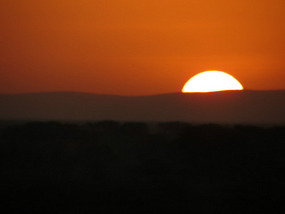






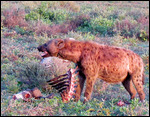
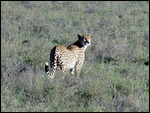
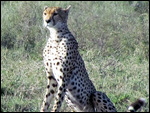
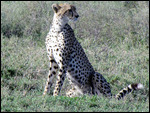
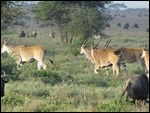
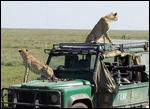
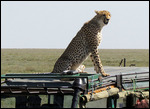
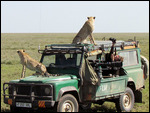
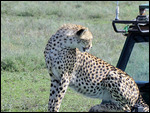
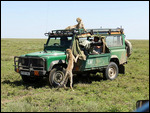
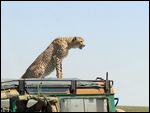
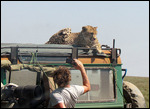
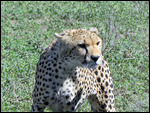
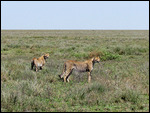
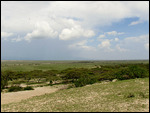
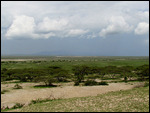
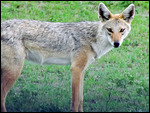

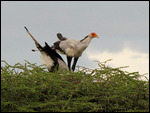

2025-05-23